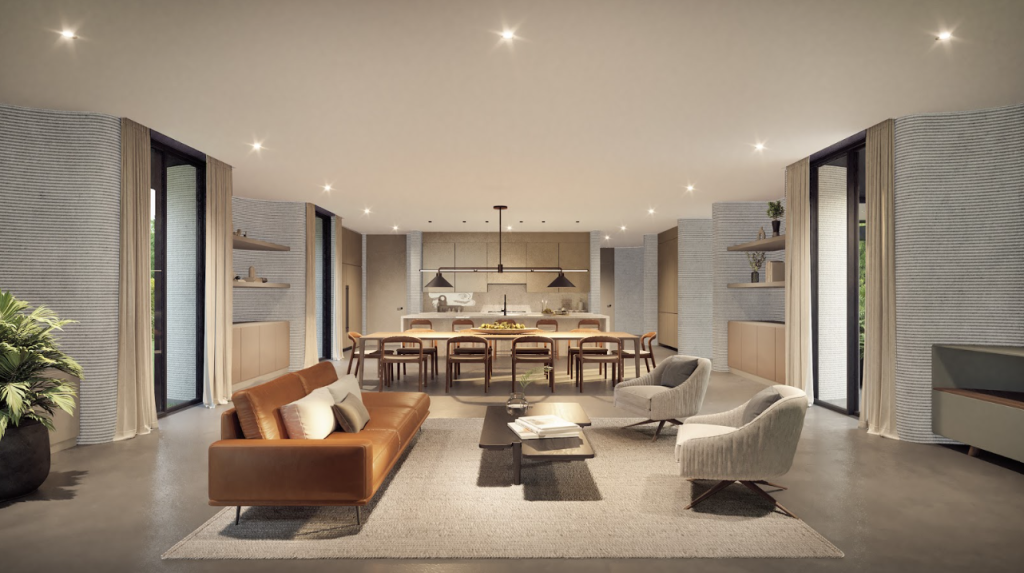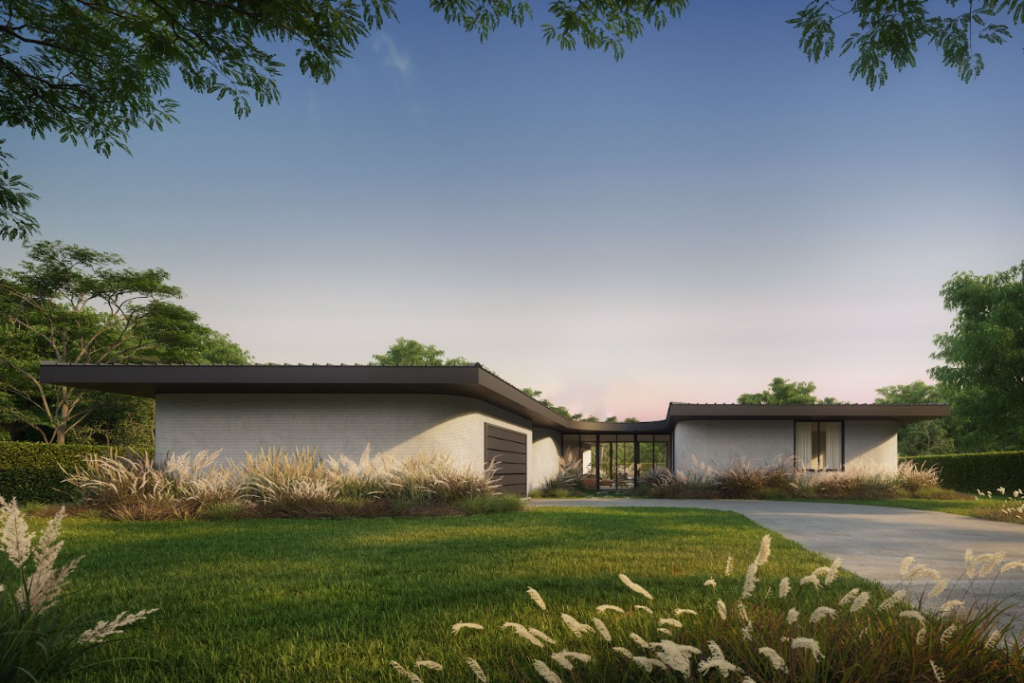Join the Expert Committee for the 2024 3D Printing Industry Awards to help select the winners!
Texas-based construction 3D printing firm ICON has announced a new housing development in Wimberley Springs.
Located 40 miles south of Austin, the development includes eight single-family homes designed using ICON’s digital architecture catalog. Ranging from 2,800 to 4,000 sq. ft. and featuring four to five bedrooms, these eight single-family homes are now available for pre-sale, with prices starting in the upper $800,000s.
According to the company, homes in Wimberley Springs feature designs from ICON’s AlphaBeta and TexNext collections. The AlphaBeta collection offers spacious homes with open floor plans and light-filled interiors that integrate indoor and outdoor living spaces. Developed with the Bjarke Ingels Group (BIG), the TexNext designs, incorporate elements of Texas’ architectural heritage with modern touches that blend with the local landscape.

From eco-friendly homes to lunar projects
Each home in Wimberley Springs features high thermal performance concrete construction, maintaining stable indoor temperatures without significant heating or cooling costs. Certified to the EnergyStar standard, these homes typically achieve a Home Energy Rating System (HERS) rating of 40-55, making them 45-60% more energy-efficient than standard new homes. ICON’s use of low-carbon material CarbonX, combined with its wall system and robotic construction methods, results in a lower carbon footprint for the building process.
ICON says the 3D printed wall system is engineered to withstand wind speeds up to 250 mph. Homes are equipped with smart thermostats and video doorbells, enhancing energy efficiency and security. Interiors boast large format windows, metal roofs, porcelain tile backsplashes, quartz countertops, and LG stainless steel appliances. Primary bedrooms feature dual vanities, freestanding tubs, and neutral tones that seamlessly blend indoor and outdoor aesthetics.
Located just three miles from the Wimberley town center, Wimberley Springs provides easy access to hiking trails, swimming areas, wineries, golf courses, restaurants, and retail stores. This community strikes a balance between serene living and proximity to local attractions, making it ideal for families and individuals looking for a tranquil setting, says the company.

For its off-world efforts, ICON secured a $57.2 million contract from NASA under Phase III of the Small Business Innovation Research (SBIR) program, advancing Project Olympus. The contract supported the development of a 3D printing system designed to build permanent lunar structures from lunar regolith. ICON tested its system in space and studied lunar regolith to refine construction techniques. This initiative aimed to contribute to NASA’s Artemis Program by establishing a sustainable human presence on the Moon.
Streamlined housing approach with construction 3D printing
With an increased use of construction 3D printing technologies, housing projects benefit from reduced costs and faster construction times through minimized labor and material waste. This approach also allows for greater design flexibility and efficiency, enhancing accessibility, energy performance, and adaptability in various housing contexts.
For instance, Portuguese company Havelar completed Portugal’s first 3D printed house, an 80m² two-bedroom home constructed in 18 hours using COBOD’s BOD2 printer. Located near Porto, this project, developed in collaboration with architects Aires Mateus, Glória Cabral, and Francis Kéré, highlights the efficiency of 3D printing in construction, says the company.
Havelar’s approach allows them to offer homes at €1,500 per m², well below Porto’s average range. The company is also working towards carbon neutrality by 2030, using sustainable building materials.
Elsewhere, Construction 3D printing firm Apis Cor announced partnerships aimed at addressing affordable housing needs in the US. Working with Struggle for Miami’s Affordable and Sustainable Housing (SMASH), Apis Cor utilized its technology to 3D print affordable homes in Miami-Dade County.
The company also partnered with Eden Village Wilmington to create low-cost tiny houses for the chronically homeless in North Carolina. Apis Cor reduced costs by up to 30% compared to traditional methods and improved efficiency. The company designed homes tailored to specific needs and built entire communities using 3D printing.
What 3D printing trends do the industry leaders anticipate this year?
What does the Future of 3D printing hold for the next 10 years?
To stay up to date with the latest 3D printing news, don’t forget to subscribe to the 3D Printing Industry newsletter or follow us on Twitter, or like our page on Facebook.
While you’re here, why not subscribe to our Youtube channel? Featuring discussion, debriefs, video shorts, and webinar replays.
Featured image shows ICON’s 3D printed homes in Wimberley Springs. Photo via ICON.



